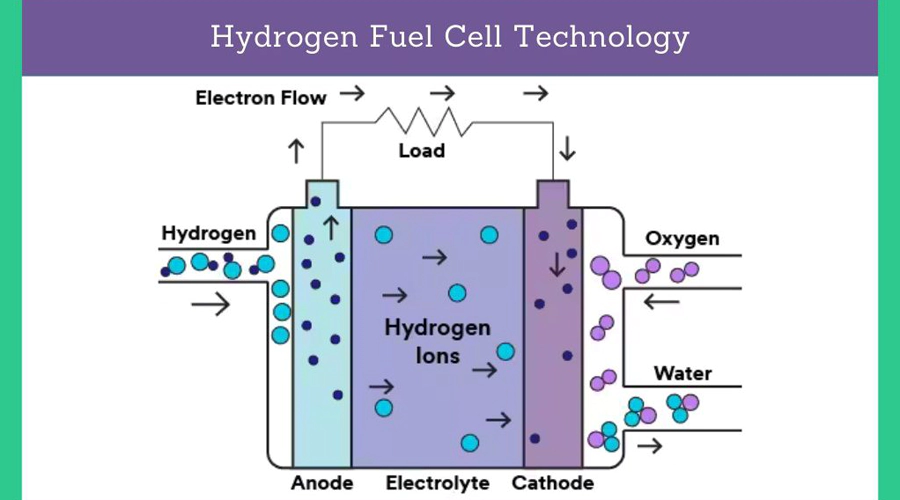Hydrogen Fuel Technology
The HHO dry cell (or hydrogen fuel cell) is an important innovation that is getting the attention of vehicle owners everywhere who are interested in reducing the cost of fueling their vehicles. A hydrogen fuel cell can be created in many ways. Our design uses electricity from your vehicle’s battery to split water (H20) into its component gases, hydrogen and oxygen.
This typically occurs in a 2:1 atomic ratio of 2 H2 + O2 which is the same proportion as water. The resulting gas oxyhydrogen is referred to as HHO or Brown’s gas (named after the famed Bulgarian scientist, Yull Brown)
This gas is three times more powerful than normal gasoline, yet it burns with the chemical stability of water. All of this takes place under controlled conditions in the combustion chamber. Other than improved fuel economy, many drivers have also reported an increase in horsepower along with a smoother, quieter engine operation. Important to keeping our planet green, vehicles using this technology also produce cleaner emissions.
Hydrogen generators produce hydrogen and oxygen by the process of electrolysis of water. Water is passed across metal plates which are connected to a current source and hydrogen is liberated at the negative plate while oxygen is liberated at the positive plate. The volume of hydrogen produced by the generator is determined by a number of factors, including the surface area of the plates, the number of plates, the spacing between the plates, the electrolyte or catalyst used (if any), and the plate material. Temperature is also a factor in generator output. Maintaining a constant temperature is one requirement for a good hydrogen generator. Output of the generator is measured in liters per minute. The amount of gas desired is determined by the size of the engine or the application. When used on an internal combustion engine, the hydrogen and oxygen are fed to the intake manifold and into the air filter housing. The reason for supplying the gas to both the manifold and air intake is to provide the gas to the engine when it is at idle and during acceleration. At idle the throttle body is closed and the vacuum at the intake manifold is at its maximum and the hydrogen is supplied to the engine through the intake manifold. When you accelerate, the throttle body opens and the vacuum at the manifold drops, but the vacuum at the air filter housing increases and the hydrogen is then supplied through the air breather. If the hydrogen is not supplied at both of these locations, the vehicle will not idle properly or it will not accelerate smoothly.
When ignited, the gas mixture converts to water vapor and releases energy, which sustains the reaction: 241.8 kJ of energy (LHV) for every mole of H2 burned. The amount of heat energy evolved is independent of the mode of combustion, but the temperature of the flame varies.
The maximum temperature of about 2800 °C is achieved with a pure stoichiometric mixture, about 700 degrees hotter than a hydrogen flame in air. When either of the gases is mixed in excess of this ratio, or when mixed with an inert gas, like nitrogen, the heat must spread throughout a greater quantity of matter and the temperature will be lower.
HHO dry cell systems can be configured to produce HHO gas on-demand either (a) through an on/off switch or (b) for as long as your vehicle’s engine is running.
The HHO produced is then channeled through the intake manifold into the combustion chamber to mix with gasoline. In doing so the combustion rate of gasoline is greatly enhanced, burning completely and cleaner.
Advantages
- Increases Mileage: 40% to 60 % increase in mileage on top of your current mileage.
- Increases the power and performance: The more fuel you burn, the more the engine gets rattled up and wrecked. Once you switch to supplemental hydrogen, it will enhance power and performance
- Reduces the CO2 emissions: Improves the cycle of the engine and reduce engine noise drastically.Due to Reduced build up of carbon deposits inside the engine, making it run smoother and cleaner
- Removes the carbon residues: inside your engine and prevent future carbon deposits.
- Lower noise and vibrations in the engine: Hydrogen effect in the combustion cycle. The engine will sound much quieter than it was before. This is due to higher combustion efficiency in your car.
- Increase life span of an engine: No carbon deposits with water-gas conversion kits the engine is steam cleaned every day.
https://suryaurza.com/hydrogen-fuel-cell/




